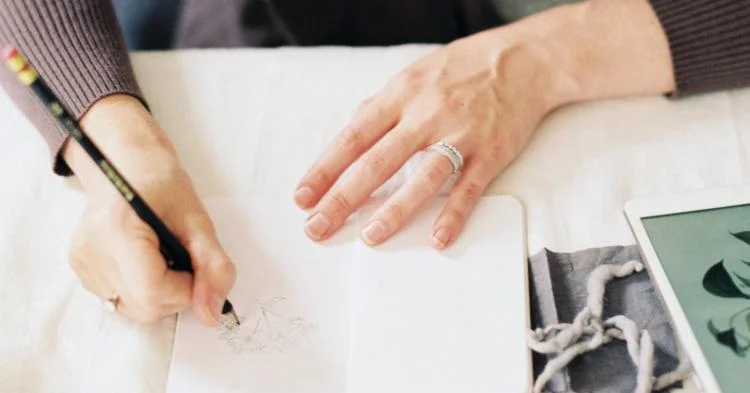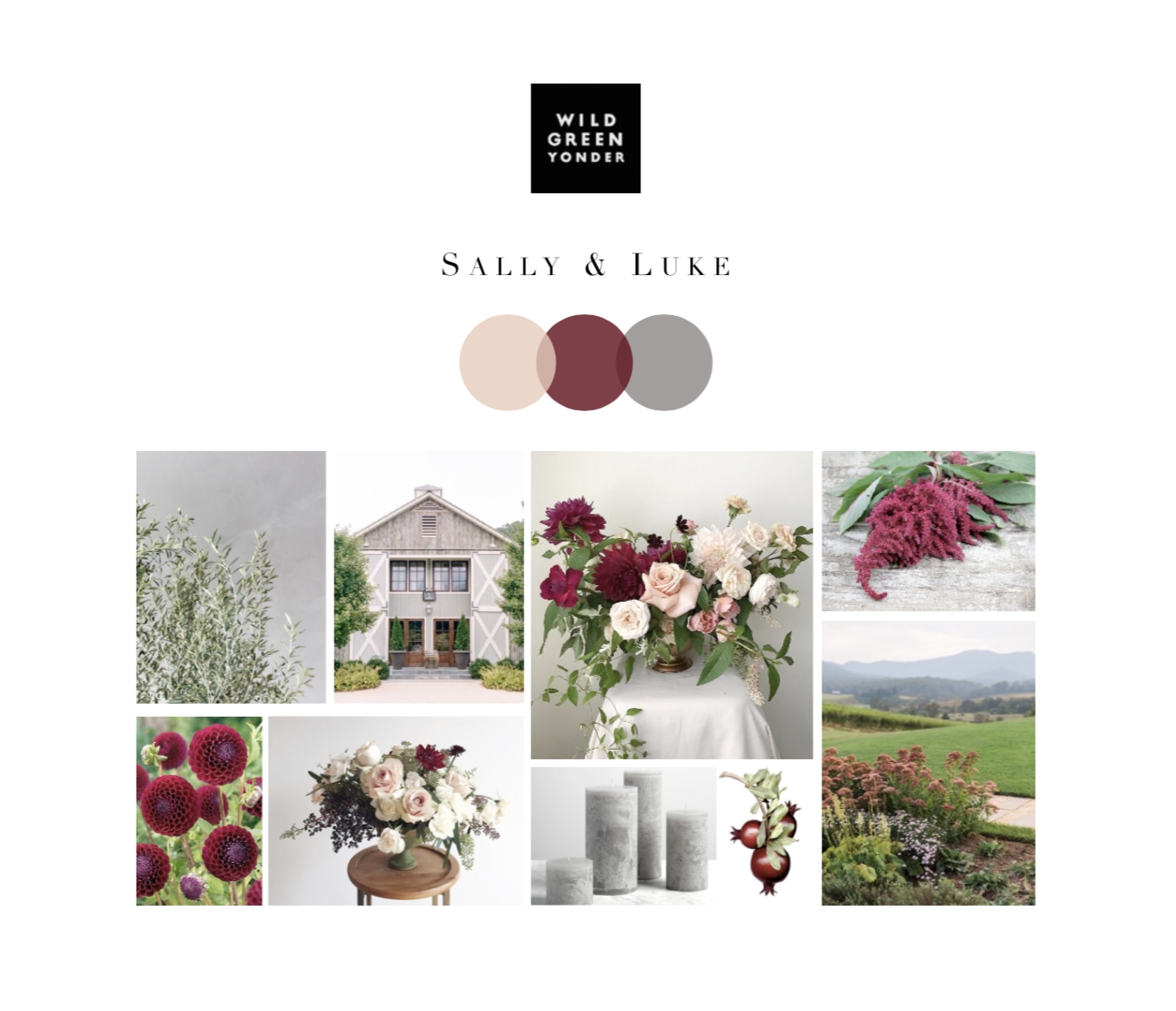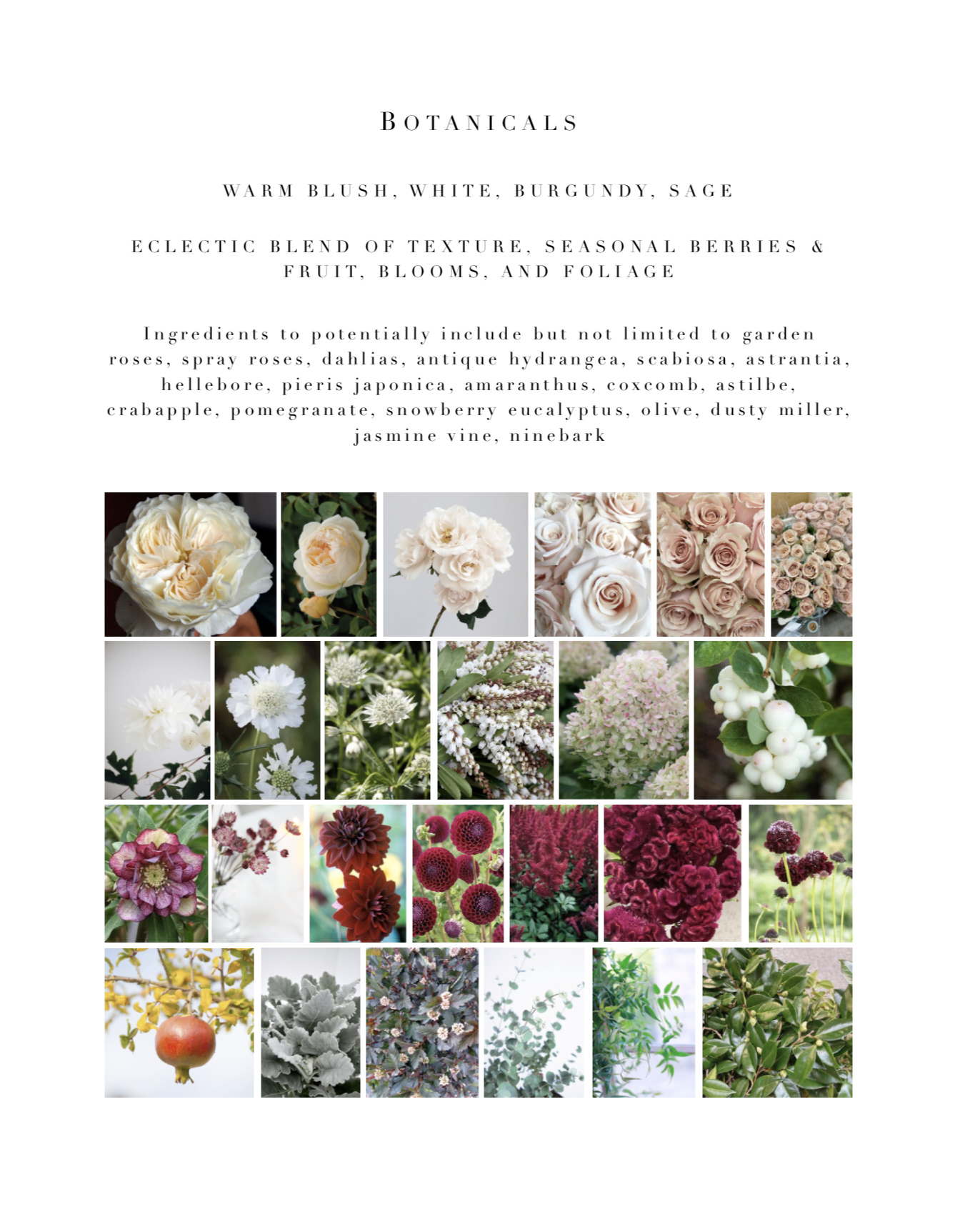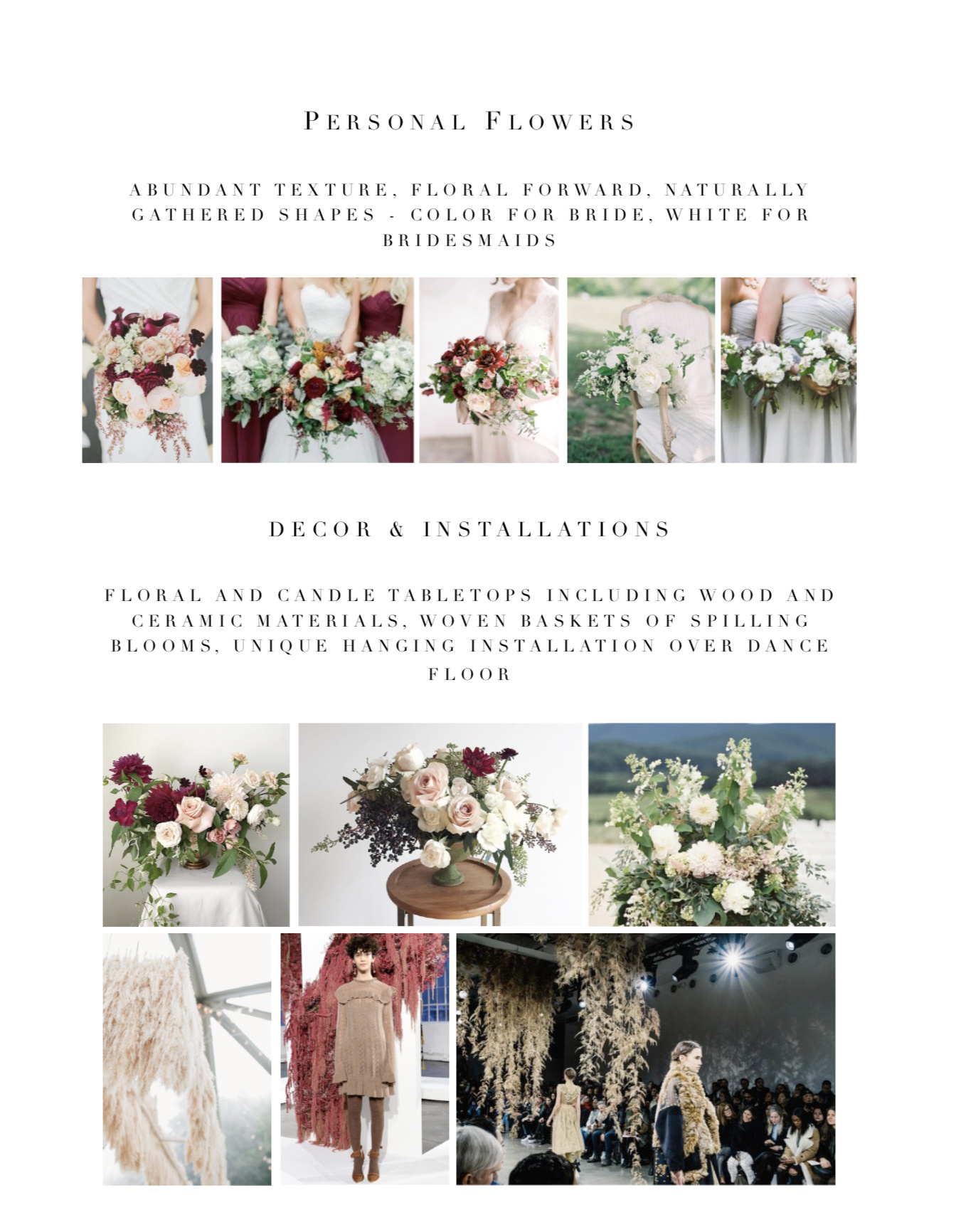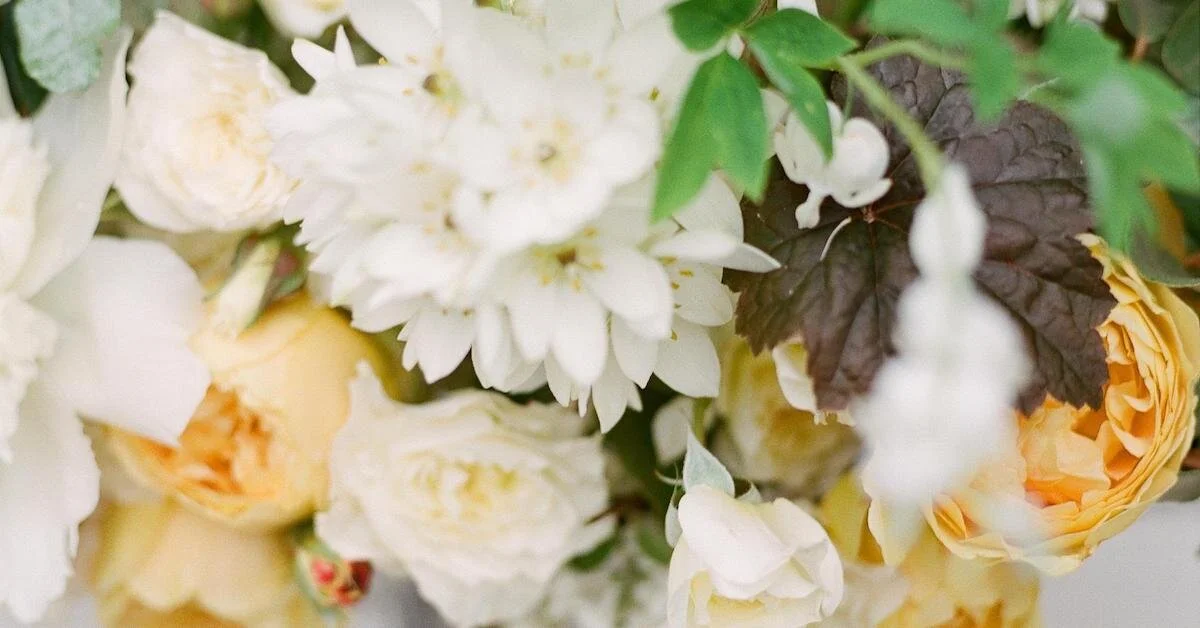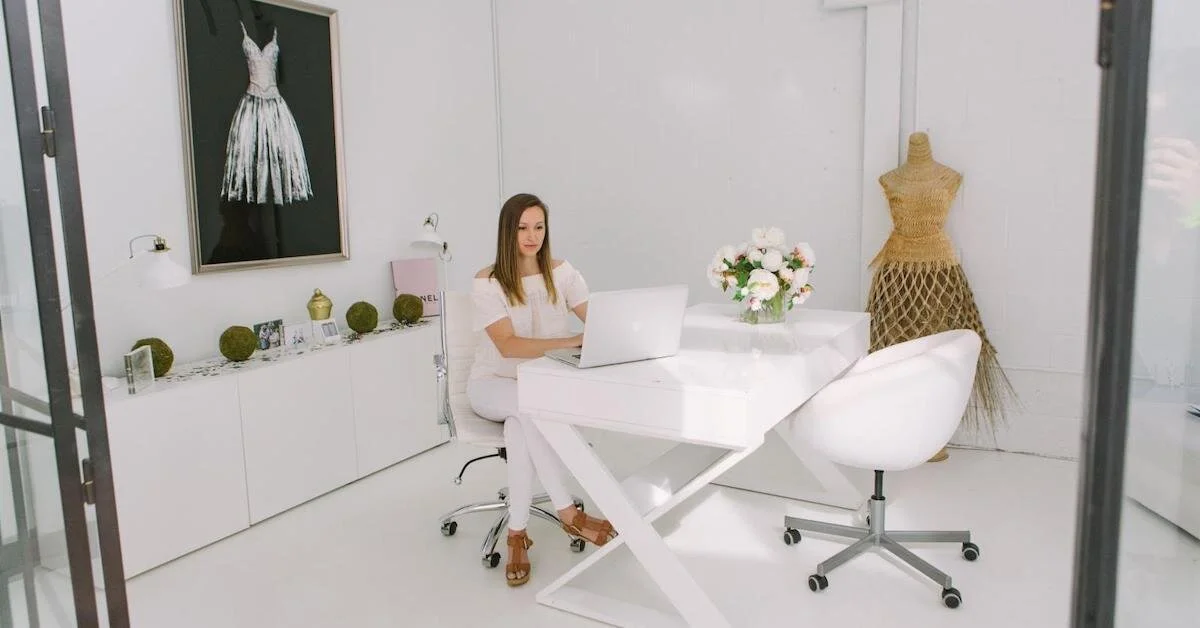How to Create Beautiful, Concise Client Proposals
Visually communicating to a client how their flowers will look on their wedding day is a vital step in the design process—and likely the biggest question mark in a client’s mind. They’re asking, “How do I know what I’m going to get?”
The key to creating a great floral plan is by being a discriminating editor. You’ve likely been provided a Pinterest board by your client that is a little bit of everything they like that’s wedding related—but it’s not always cohesive or sensible for their budget or style. It’s your job as the designer to whittle down all the inspiration and ideas into a concise visual plan that becomes the guideline for all the design work to come. It will serve as the blueprint that guides your decisions on everything—from what flowers to order to how big the bouquets should be—and ensures you and your client are on the same page aesthetically.
You don’t need to be a graphic designer to create a professional-looking proposal. Even using a simple program like Word or the Pages app on a Mac can yield a great result. I prefer using Pages to create proposals, and I have a saved template that I’m able to quickly adapt to each new client by changing out the images and text.
The proposals I create consist of five sections I’ve saved in a template format that’s easy to fill in for each new wedding. These include the following:
Mood board and Color Palette
Botanical Ingredients
Finishes
Personals, Ceremony, Reception
Summary
Mood board and Color Palette
The first page of the proposal establishes the tone of the wedding and presents the color palette. I refer to this page again and again throughout my design process and usually share the mood board with my wholesale sales rep when placing my flower order. It’s a great way to ensure your flowers align with the right palette.
If you’re using the Pages app, it’s easy to click and drag images from your computer onto the page, then resize them and move them around to create collages. There is also a myriad of apps for creating collages that you can save as an image file and drop into your program of choice that you’re using to develop the proposal (dipticapp.com is a good one to try).
I manually create my mood boards vs. using a collage app because I like to control each image’s size and placement—which dictates the “hierarchy” among the other photos. The essential pictures are the ones that really encapsulate the overall tone or feeling of the wedding, and those images should be placed in a way that they stand out to the eye through scale and position. I find that my mood boards usually reflect a particular formula which includes a floral piece, a texture, the venue, and the season or another botanical element—all of which should follow the overarching color palette that I include within color swatches at the top of the mood board.
Botanical Ingredients
Creating this section in advance saves so much time when it comes time to place your flower order. Refer to this visual shopping list you’ve already created! This page includes images of all the key ingredients I plan to use, accompanied by a general description of color tones and textures and ingredient names. A small disclaimer at the bottom stating that the final ingredient mix will vary based on availability is a friendly reminder to your client that this is a guide—not a guarantee—to which flowers will make an appearance at their wedding.
Finishes
Here is where I suggest which hard goods to utilize for the wedding. I include images of vases, urns, candleholders, runners, and any other design elements we might be handling for the event. This provides another visual check to be sure everything is cohesive and ensures the client approves of the look and feel of all the containers.
Personals, Ceremony, Reception
In each of these sections, I include a couple of inspiration images to establish size, scale, shape, composition, color, and texture. I also include simple sketches if we are creating anything custom or something where I can’t find an image that’s quite right for visually explaining what we plan to do. Here is where your editing skills are valuable—it’s important not to overwhelm the client with too many images and only use the very best representations for each item. Those images will help lead the design discussion since there’s something specific for the client to reference; they might see your bouquet inspiration and decide they want a bigger size or a more compact composition than the inspiration image, which makes it easy for you to note and reference on design day.
Summary
At the end of the floral plan, I always include a written summary of all the items currently in the contract. This serves as a checklist that I can run through with my client to be sure of what we may need to add or remove to the agreement. It’s also my checklist when ordering flowers and for designing for the wedding that I can refer back to ensure I include all the pieces.
It’s important to note that a proposal provided before the client has signed a contract should not be one of this complexity. After I’ve met with a prospective client, the proposal they receive from me is a simple price quote: a text-only document with detailed descriptions and price points but no mood boards, color palettes, images, or sketches are included. I make sure to explain this process during the consultation, so potential clients know what to expect and understand that my creative energy is reserved for clients that have booked me with a signed contract and paid a retainer deposit.
Explaining the level of detail and time I spend creating a unique floral plan for every client is part of my sales process and adds value to my services.
The floral plan is essential for ensuring that your work meets the client’s expectations. I print out the final plan and tape up every page to the wall in my studio when we’re designing so my team can continually check that we are on track aesthetically. While it is initially time-consuming to curate all the images and compile the plan, it saves me a lot of time and stress as the wedding draws near. It serves as my guide for shopping for ingredients and designing in a way I know the client will love.

